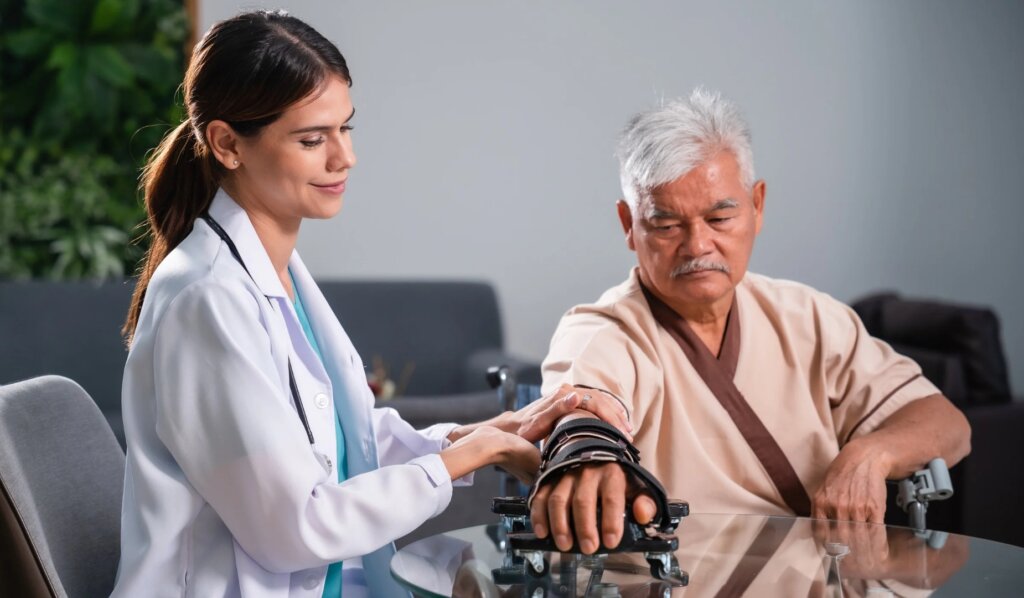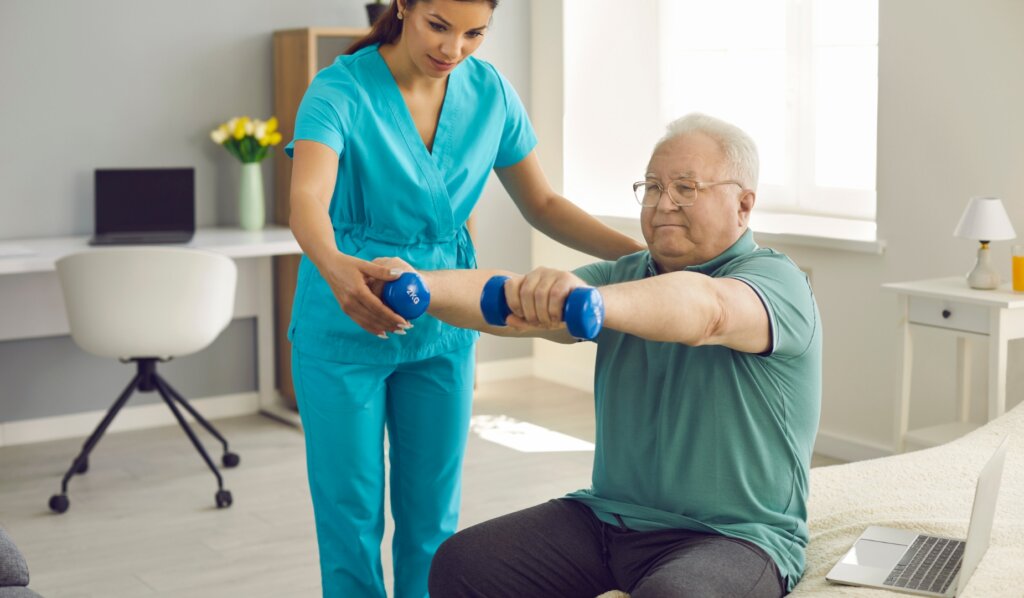Key Takeaways:
- Strokes can be ischemic or hemorrhagic, with different causes and symptoms.
- Ischemic strokes are caused by blood clots or blockages in the brain’s blood vessels.
- Hemorrhagic strokes occur when blood vessels rupture and bleed into the brain.
- Common symptoms of ischemic strokes include weakness, numbness, difficulty speaking, and coordination loss.
- Common symptoms of hemorrhagic strokes include severe headache, nausea, seizures, and loss of consciousness.
- Recognizing stroke symptoms using the FAST acronym: Face drooping, Arm weakness, Speech difficulties, Time to call emergency services.
- Unusual stroke symptoms include hiccups, difficulty swallowing, loss of balance, unexplained nausea or vomiting, and changes in behavior.
- Isolating symptoms to one side of the body, sudden severe headaches, and rapid symptom worsening are indicative of a stroke.
- Post-stroke recovery involves rehabilitation, addressing psychological challenges, and adopting a healthy lifestyle.
- Rehabilitation includes physical, occupational, and speech therapy to regain independence and functionality.
- Stroke survivors often experience psychological challenges such as frustration, anxiety, and depression.
- A healthy diet, regular exercise, and lifestyle modifications can prevent future strokes.
- Risk factors for recurrent strokes include high blood pressure, high cholesterol, diabetes, and sedentary lifestyle.
- Prevention strategies include medication, healthy diet, physical activity, and managing chronic conditions.
- Advocating for stroke awareness and education can help individuals recognize symptoms and seek early treatment.
The Different Types of Strokes: Ischemic vs. Hemorrhagic
Strokes, a critical medical emergency, arise from an interruption in the brain’s blood supply, leading to potential brain damage and neurological issues. They fall into two main categories: ischemic, caused by blood clots that block blood flow to the brain, and hemorrhagic, resulting from bleeding within or around the brain. Recognizing the symptoms associated with each type is vital for timely and appropriate treatment.
The distinction between ischemic vs hemorrhagic stroke symptoms is key to understanding their impact. Ischemic stroke symptoms often include sudden numbness, particularly on one side of the body, confusion, and difficulty with speech and vision. Hemorrhagic stroke, meanwhile, may present these symptoms alongside severe headaches, nausea, and even loss of consciousness, indicating the critical nature of the bleeding in the brain.
Understanding these differences helps in recognizing the signs early and seeking immediate medical intervention, crucial steps for reducing long-term damage and improving recovery outcomes.

1. What is an ischemic stroke?
An ischemic stroke occurs when a blood clot or blockage forms in a blood vessel within the brain, cutting off the flow of oxygen and nutrients to that part of the brain. This can happen due to the narrowing of arteries from atherosclerosis or the development of a blood clot elsewhere in the body, which then travels to the brain.
Common risk factors for ischemic strokes include high blood pressure, smoking, diabetes, obesity, and high cholesterol levels. Symptoms of an ischemic stroke may include sudden weakness or numbness on one side of the body, difficulty speaking, severe headache, and loss of coordination.

2. Understanding a hemorrhagic stroke
A hemorrhagic stroke, on the other hand, is characterized by bleeding within the brain. This can occur when a weakened blood vessel ruptures, causing blood to leak into the surrounding brain tissue. The two main types of hemorrhagic strokes are intracerebral hemorrhage and subarachnoid hemorrhage.
Intracerebral hemorrhage is the most common type of hemorrhagic stroke and is often caused by chronic hypertension. It occurs when a small blood vessel within the brain bursts, leading to bleeding and damage to the surrounding brain tissue. Subarachnoid hemorrhage, on the other hand, occurs when a blood vessel bursts near the surface of the brain, causing bleeding around the brain and in the subarachnoid space. This type of stroke is often associated with a ruptured cerebral aneurysm.
Common risk factors for hemorrhagic strokes include high blood pressure, smoking, excessive alcohol consumption, use of blood-thinning medications, and certain medical conditions such as cerebral aneurysms and arteriovenous malformations. Symptoms may include sudden and severe headache, nausea and vomiting, seizures, and loss of consciousness.
3. Comparing the symptoms and risk factors of ischemic and hemorrhagic strokes
While both ischemic and hemorrhagic strokes can have debilitating effects, there are some key differences in their symptoms and risk factors. Ischemic strokes are more common and are often associated with risk factors such as high blood pressure, diabetes, and smoking. Symptoms of an ischemic stroke may vary depending on the area of the brain affected but commonly include weakness or numbness on one side of the body, difficulty speaking, and loss of coordination.
Hemorrhagic strokes, on the other hand, are less common but tend to be more severe. They are often associated with risk factors such as high blood pressure, excessive alcohol consumption, and cerebral aneurysms. Symptoms may include a sudden and severe headache, nausea and vomiting, and loss of consciousness.
Identifying Stroke Symptoms: What to Look Out For
The key to minimizing the damage caused by a stroke is early recognition and prompt medical attention. Being able to identify the symptoms of a stroke is crucial in ensuring timely treatment. A widely recognized acronym used to identify stroke symptoms is FAST, which stands for:
1. The role of FAST in recognizing stroke symptoms
- Face drooping: One side of the face may droop or feel numb, making it difficult to smile.
- Arm weakness: One arm may feel weak or numb and may drift downward when trying to raise both arms.
- Speech difficulties: Speech may become slurred or incoherent, making it challenging to understand or communicate.
- Time to call emergency services: If someone exhibits any of these symptoms, it is crucial to call emergency services immediately.
Additionally, it’s important to be aware of less common stroke symptoms that may not be as easily recognizable. These can include sudden dizziness, severe headache, vision changes, confusion, and difficulty walking or maintaining balance. If any of these symptoms occur suddenly, it is essential to seek medical attention as they could be indicative of a stroke or another serious medical condition.
2. Unusual stroke symptoms you might not be aware of
While the classic symptoms of a stroke, such as face drooping, arm weakness, and speech difficulties, are well-known, there are some unusual symptoms that people might not be aware of. These symptoms may not be as easily recognized as traditional signs of a stroke, leading to delays in seeking medical help.
Some unusual stroke symptoms include sudden hiccups, difficulty swallowing, sudden loss of balance or coordination, unexplained nausea or vomiting, and sudden changes in behavior or personality. It is important to be vigilant and not dismiss these symptoms as unrelated or insignificant, as they could potentially be signs of a stroke.
3. How to differentiate stroke symptoms from other conditions
It is essential to differentiate stroke symptoms from other conditions, as prompt treatment is crucial in minimizing the damage caused by a stroke. While some symptoms may overlap with other medical conditions, there are specific signs that can help distinguish stroke symptoms from other issues.
For example, symptoms that are isolated to one side of the body, such as one-sided weakness or numbness, are more likely to be indicative of a stroke. Sudden and severe headaches, particularly if they are different from previous headaches, can also be a warning sign of a stroke. Additionally, if symptoms appear suddenly and worsen rapidly, this is more likely to be associated with a stroke.
If there is any doubt or uncertainty, it is always better to err on the side of caution and seek medical attention immediately. The sooner a stroke is diagnosed and treated, the better the chances of a successful recovery.

Post-Stroke Recovery: A Journey to Regaining Health
Recovering from a stroke is a complex and individualized process that requires a comprehensive approach. The ultimate goal of post-stroke recovery is to regain as much independence and functionality as possible, both physically and mentally.
1. The importance of rehabilitation in post-stroke recovery
Rehabilitation is a critical component of post-stroke recovery. It typically involves a multidisciplinary team of healthcare professionals, including physiotherapists, occupational therapists, speech therapists, and psychologists. The specific rehabilitation program will depend on the individual’s needs and may include physical exercises to improve strength and mobility, occupational therapy to facilitate daily activities, speech therapy to address communication difficulties, and psychological support to cope with emotional challenges.
Consistency and regularity are key in rehabilitation, as progress may be gradual. It is important to remain patient and persistent, as the brain has remarkable plasticity and can continue to reorganize and create new neural connections even after a stroke.
2. Discovering the psychological and emotional challenges of stroke survivors
Stroke survivors often face a range of psychological and emotional challenges on their road to recovery. The sudden loss of independence, changes in physical abilities, and potential cognitive impairments can lead to feelings of frustration, anxiety, and depression. Additionally, survivors may also experience difficulties adjusting to their new circumstances, managing stress, and coping with loss.
It is essential to address these psychological and emotional challenges as part of the post-stroke recovery process. Supportive therapy, counseling, and involvement in support groups can provide valuable resources and a safe space for individuals to share their experiences and learn coping strategies.
3. Promoting a healthy lifestyle after a stroke: diet, exercise, and more
Adopting a healthy lifestyle is crucial for both stroke prevention and post-stroke recovery. Following a well-balanced diet that is low in saturated fats, cholesterol, and sodium can help manage risk factors such as high blood pressure and high cholesterol levels.
Regular exercise is also important, as it can improve cardiovascular health, enhance physical function, and aid in weight management. The type and intensity of exercise should be tailored to the individual’s abilities and limitations, with guidance from healthcare professionals.
In addition to diet and exercise, other lifestyle modifications such as quitting smoking, limiting alcohol consumption, and managing stress can also contribute to better overall health and well-being after a stroke.

Maintaining Optimal Health After a Stroke: Preventing Future Incidents
While recovering from a stroke is a significant achievement, it is important to take steps to prevent future incidents. By addressing underlying risk factors and making necessary lifestyle modifications, individuals can reduce their risk of recurrent strokes.
1. Understanding the risk factors for recurrent strokes
Several risk factors increase the likelihood of experiencing a recurrent stroke. These include high blood pressure, high cholesterol levels, diabetes, smoking, obesity, and a sedentary lifestyle. Individuals with a history of stroke or transient ischemic attack (TIA) are also at higher risk of experiencing another stroke.
It is essential for individuals who have experienced a stroke to work closely with their healthcare team to manage these risk factors through medication, lifestyle changes, and regular monitoring.
2. Stroke prevention strategies and lifestyle modifications to prevent future incidents
Preventing future strokes involves a combination of medical interventions and lifestyle modifications. Medications such as antiplatelet drugs, anticoagulants, and blood pressure-lowering medications may be prescribed to manage underlying conditions and reduce the risk of blood clots.
Lifestyle modifications play a crucial role in stroke prevention. These include adopting a healthy diet, engaging in regular physical activity, maintaining a healthy weight, avoiding smoking and excessive alcohol consumption, and effectively managing chronic medical conditions such as diabetes and high blood pressure.
3. Advocating for stroke awareness and education in the community
Stroke awareness and education are vital in helping individuals recognize the signs and symptoms of a stroke and seek prompt medical attention. Increased awareness can lead to faster interventions, improving outcomes and reducing the long-term impact of strokes.
Community-based campaigns and educational programs can help spread awareness and provide information on stroke prevention strategies and the importance of early intervention. By advocating for stroke awareness, individuals can contribute to healthier communities and ultimately reduce the burden of stroke.
FAQ
Question: What is an ischemic stroke? – An ischemic stroke occurs when a blood clot or blockage forms in a blood vessel within the brain, cutting off the flow of oxygen and nutrients to that part of the brain. This can happen due to the narrowing of arteries from atherosclerosis or the development of a blood clot elsewhere in the body, which then travels to the brain.
Question: What is a hemorrhagic stroke? – A hemorrhagic stroke is characterized by bleeding within the brain. This can occur when a weakened blood vessel ruptures, causing blood to leak into the surrounding brain tissue. There are two main types of hemorrhagic strokes: intracerebral hemorrhage and subarachnoid hemorrhage.
Question: How do the symptoms and risk factors of ischemic and hemorrhagic strokes differ? – While both ischemic and hemorrhagic stroke symptoms can have debilitating effects, there are some key differences in their symptoms and risk factors. Ischemic strokes are more common and are often associated with risk factors such as high blood pressure, diabetes, and smoking. Symptoms of an ischemic stroke may vary depending on the area of the brain affected but commonly include weakness or numbness on one side of the body, difficulty speaking, and loss of coordination. Hemorrhagic strokes, on the other hand, are less common but tend to be more severe. They are often associated with risk factors such as high blood pressure, excessive alcohol consumption, and cerebral aneurysms. Symptoms may include a sudden and severe headache, nausea and vomiting, and loss of consciousness.
Question: What are the symptoms of a stroke? – Classic symptoms of a stroke include face drooping, arm weakness, speech difficulties, and the need to call emergency services immediately. Unusual stroke symptoms can include hiccups, difficulty swallowing, loss of balance, unexplained nausea or vomiting, and changes in behavior or personality. Symptoms that are isolated to one side of the body, sudden severe headaches, and rapid symptom worsening are also indicative of a stroke.
Question: What is involved in post-stroke recovery? – Post-stroke recovery involves rehabilitation, addressing psychological challenges, and adopting a healthy lifestyle. Rehabilitation includes physical exercises, occupational therapy, and speech therapy to regain independence and functionality. Stroke survivors often experience psychological challenges such as frustration, anxiety, and depression, which can be addressed through supportive therapy, counseling, and support groups. Adopting a healthy diet, regular exercise, and lifestyle modifications can prevent future strokes.
Question: What are the risk factors for recurrent strokes? – Risk factors for recurrent strokes include high blood pressure, high cholesterol levels, diabetes, smoking, obesity, a sedentary lifestyle, and a history of stroke or transient ischemic attack (TIA). Managing these risk factors through medication, lifestyle changes, and regular monitoring is crucial in preventing future incidents.
Question: How can strokes be prevented? – Prevention strategies include medication, adopting a healthy diet, engaging in regular physical activity, maintaining a healthy weight, avoiding smoking and excessive alcohol consumption, and effectively managing chronic medical conditions such as diabetes and high blood pressure.
Question: How can individuals contribute to stroke awareness? – Individuals can contribute to stroke awareness by advocating for education and spreading information on stroke prevention strategies and the importance of early intervention. Participating in community-based campaigns and educational programs can help raise awareness and reduce the burden of stroke.
